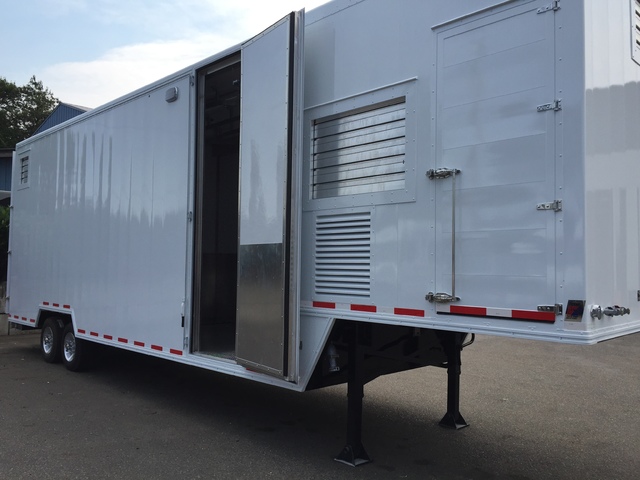The state’s first mobile slaughterhouse unit is in its final phases of certification. ADVERTISING The state’s first mobile slaughterhouse unit is in its final phases of certification. After hiring staff and conducting training earlier this year, Hawaii Island Meat Cooperative,
The state’s first mobile slaughterhouse unit is in its final phases of certification.
After hiring staff and conducting training earlier this year, Hawaii Island Meat Cooperative, the group that owns and operates the unit, is awaiting the assignment of a dedicated U.S. Department of Agriculture inspector. The inspector will oversee processing days and is expected to be assigned by the end of the month.
Michael Amado, president of the cooperative, said that the USDA will most likely reassign inspectors already working in Hawaii before hiring a fulltime inspector who is based on the Big Island.
“We don’t determine the timing, USDA does,” Amado said. “They’ve been extremely supportive and helpful.”
In February, a team from Island Grown Farmers Cooperative in Washington state oversaw training sessions for the new butchers as well as some of the co-op’s board members.
“We brought their people in to train our people, so they had some of the best advisors available,” Amado said.
The IGFC’s mobile unit was the first in the country to receive USDA certification for processing red meat.
“The USDA doesn’t change the rules just because we’re mobile,” IGFC manager Jim Wieringa told the Tribune-Herald. “We have the same rules as a fixed facility would have.”
The training was also attended by a mainland representative from the Animal Welfare Approved organization, who recommended the unit for AWA certification.
“We’ll be operating under a provisional certification from them for a year,” Amado said.
Hawaii Island Meat Cooperative has hired four contract butchers as well as a fulltime manager. Angela Kang will oversee scheduling, logistics and compliance. The unit is based in Waimea, but will travel around the island as needed for on-the-farm processing.
The group is still conducting a membership drive for farmers interested in joining the co-op. Many are holding off on membership until the unit begins operation, Amado said.
Others are waiting for the last piece of the processing puzzle to fall into place: a facility for cutting and wrapping the meat so smaller portions can be sold.
“It’s pretty clear that we can see (that) there’ll be kind of a break in the dam (then),” Amado said. Grant writing for the cut-wrap facility is ongoing. So far the mobile unit has secured more than $500,000 in grants.
The greatest demand for the unit’s service comes from hog farmers.
But cattle processing is also in demand, which has surprised the co-op members. There are already two facilities for beef processing on-island.
“That wasn’t really our highest target,” Amado said. “It’s just people that are raising cattle that want to do something that doesn’t fit into the schedule and capability of the other facilities.”
Lamb and goat can also be processed at the unit.
Wieringa said there can be a learning curve for getting a mobile slaughterhouse off the ground.
“For us, the first three years were tough to kind of get things rolling, but at the end of the third year we started to streamline our process,” Wieringa said. “We started growing and we haven’t stopped since.”
“What people are really looking for is a local product,” he said. “That little niche market is what we tapped into, and that has grown considerably.”
According to the Kohala Center, about 83 percent of the island’s beef and 95 percent of pork, lamb and goat is imported.
Email Ivy Ashe at iashe@hawaiitribune-herald.com.



